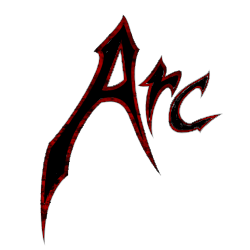I often see people mention the Portainer project and how it’s useful, but I never hear any reason to use it other than as a more user friendly front end to service management.
So is there any particular feature or reason to use portainer over docker’s CLI? Or is it simply a method of convenience?
This isn’t only strictly for self hosting, but I figure people here would know better.
Please don’t use Portainer.
- It kidnaps your compose files and stores them all in its own grubby little lair
- It makes it basically impossible to interact with docker from the command line once it has its claws into your setup
- It treats console output - like error messages - as an annoyance, showing a brief snippet on the screen for 0.3 seconds before throwing the whole message in the shredder.
If you want a GUI, Dockge is fantastic. It plays nice with your existing setup, it does a much better job of actually helping out when you’ve screwed up your compose file, it converts run commands to compose files for you, and it gets the fuck out of the way when you decide to ignore it and use the command line anyway, because it respects your choices and understands that it’s here to help your workflow, not to direct your workflow.
Edit to add: A great partner for Dockge is Dozzle, which gives you a nice unified view for logs and performance data for your stacks.
I also want to note that both Dockge and Dozzle are primarily designed for homelab environments and home users. If we’re talking professional, large scale usage, especially docker swarms and the like, you really need to get comfortable with the CLI. If you absolutely must have a GUI in an environment like that, Portainer is your only option, but it’s still not one I can recommend.
As another commenter mentioned, Lazydocker combines Dockge and Dozzle features, and adds some other things to give you a TUI environment that works over SSH so you don’t have to open a web port to use it.
I’ve never used Portainer but I feel a GUI setup like it just abstracts Docker and prevents learning concepts that are conducive to understanding Docker. That’s why I’ve never used a GUI to manage my Docker environment.
I don’t think there’s anything inherently wrong with the idea of using a GUI, especially for a non-professional who mostly just wants to get into self-hosting. Not everyone has to learn all the ins and outs of every piece of software they run. My sister is one of the least technical people in the world, and she has her own Jellyfin server. It’s not a bad thing that this stuff has become more accessible, and we should encourage that accessibility.
If, however, you intend to use these tools in a professional environment, then you definitely need to understand what’s happening under the hood and at least be comfortable working in the command line when necessary. I work with Docker professionally, and Dockge is my go to interface, but I can happily maintain any of my systems with nothing but an SSH connection when required. What I love about Dockge is that it makes this parallel approach possible. The reason I moved my organization away from Portainer is precisely because a lot of more advanced command line interactions would outright break the Portainer setup if attempted, whereas Dockge had no such problems.
Totally, I get it if its a means to an end to get something like Jellyfin up.
Maybe its a me thing. I just like to understand the mechanics of the tools I use.
Dozzle sounds awesome, definitely adding it to my stack
Just because something doesn’t fit your use case doesn’t make it a terrible product. Portainer isn’t meant to complement managing docker via CLI. It’s meant to be the management interface.
If you want to manage your environment via CLI, I agree, don’t use Portainer. If you’re content (or prefer) a GUI, Portainer is a solid option. Esp if you have multiple hosts or want to manage more than just the compose stack. Last time I checked Dockge doesn’t do either.
The thing is, those poor design decisions have nothing to do with those features, i claim that every feature could be implemented without “holding the compose files hostage”.
Btw. dockge does support connecting to another docker dockge instance.
The thing is, those poor design decisions have nothing to do with those features, i claim that every feature could be implemented without “holding the compose files hostage”.
Yes, this is exactly my point. I think I’ve laid out very clearly how Portainer’s shortcomings are far more than just “It’s not for your use case.”
Portainer is designed, from the ground up to trap you in an ecosystem. The choices they made aren’t because it’s necessary to do those things that way in order to be a usable Docker GUI. It’s solely because they do not want you to be able to easily move away from their platform once you’re on it.
Only by exposing the docker socket. And it doesn’t support managing network or volumes.
I switched from portainer to dockge. Dockge makes updating a 1-click process which I love. Portainer is overkill for homelab, but I like how it lists things like images and networks.
Like many GUIs it makes it so you don’t have to remember and type a bunch of commands to carry out basic tasks. I especially find it convenient for checking logs. But no unique functionality compared to CLI. So it’s a matter of preference.
But that’s also why you don’t know the commands in the first place, if you used them you would remember them. It’s self sustaining ignorance ;)
Ps: I kid, there a lot of stuff I don’t care to remember the cli for and I happily use GUI.
PPS:
docker logs -f container_name;)The constant argument in this space that you must know the arcane workings of everything you use, is exhausting.
This is why you use fish shell and just type something vaguely similar to what you remember and hit the up arrow key.
95% of the time I’ll use the CLI but occasionally it’s faster for me to check a bunch of boxes in Portainer and restart entire stacks at the same time instead of going to each one’s folder. Maybe a few other little things like that but you get the idea.
I’d imagine that if your job is making YouTube videos, portainer and other graphical abstraction layers probably make more visually interesting videos than just watching someone type out a bunch of commands.
Somewhat off topic but I’ve been using this lately and it’s great https://github.com/jesseduffield/lazydocker. If all you want is a ui over docker this may be better than going all in on something like portainer
Can you compare this to dockge by any chance?
TUI so it’s easy to use over SSH. And I think it’s a lot more featureful than dockge. You can remove images, get a running log, performance graphs and more environment info.
I put this on all my docker hosts and alias it to
lzd, use it all the time.Never used dockge sorry
Excellent utility, this covers everything I used Portainer for and works over SSH.
It’s a good way to have all the different parts exposed to you. Once you’re familiar, it’s usually easier to write those parts up in a compose file and just run or rerun docker-compose.
This is exactly what I do. I find Portainer to be nice for getting an overview of my containers that are all created using docker-compose.
Use docker compose
I’m using it to manage a little swarm , the useful thing is that is easy to explain to a non IT person how to log in and restart a service if needed.
Personal preference? I prefer the Portainer’s presentation over the CLI. I especially find it easier to manage networks and volumes.
But my main reason is I have multiple docker hosts and it gives me a “single pane on glass” to manage everything from.
It’s just a front-end abstraction for different c ontainer backends, so no. I don’t think they have some distinct features that deal in any functionality for the container ecosystem or anything.








